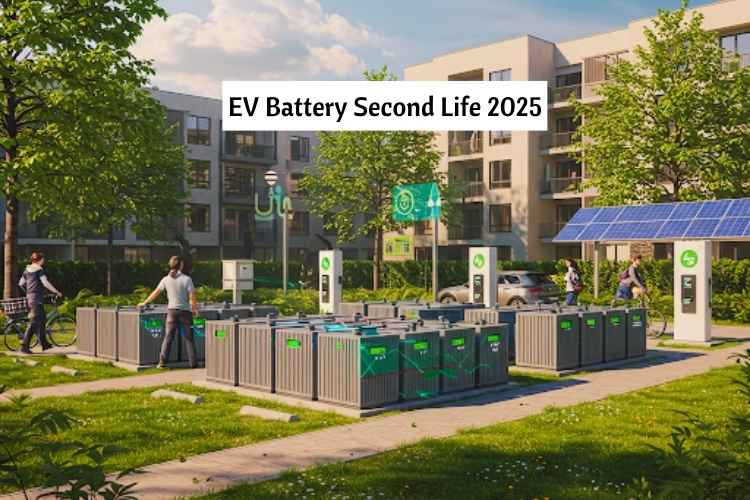EV Battery Second Life 2025: The electric vehicle (EV) revolution is in full swing. With global EV sales surpassing 14 million units in 2023, the world is accelerating toward a cleaner transportation future. That’s where the concept of “EV battery second life” comes in. In 2025, this second life—recycling and repurposing EV batteries—will not just be a sustainability necessity but a booming industry.

Table of Contents
EV Battery Second Life 2025: After Their First Life?

After years on the road, an EV battery gradually loses capacity. When it drops to around 70%, it’s considered no longer efficient for automotive use, but it’s far from useless.
There are two primary paths for these used batteries:
| Path | Description |
|---|---|
| Recycling | Recovering raw materials like lithium, cobalt, and nickel for new battery production. |
| Repurposing | Reusing batteries in less demanding applications like energy storage or home backup systems. |
EV Battery Recycling in 2025 – How and Why It’s Done
Why Recycling Matters
Battery materials like lithium, nickel, and cobalt are expensive and finite. Mining them has a large environmental footprint. Recycling helps:
- Reduce dependence on mining
- Lower EV battery costs
- Cut carbon emissions
How EV Batteries Are Recycled
The main recycling processes in 2025 include:
| Method | How It Works | Efficiency |
|---|---|---|
| Pyrometallurgy | Melting batteries at high temperatures to extract metals. | Moderate |
| Hydrometallurgy | Using chemical solutions to dissolve and separate valuable materials. | High |
| Direct Recycling | Retains battery components in usable form with minimal processing. | Emerging, efficient |
EV Battery Second Life Trends in 2025
Several exciting trends are shaping this space in 2025:
| Trend | Details |
|---|---|
| Battery Passport Systems | Digital IDs track battery health, aiding reuse and compliance. |
| AI-Powered Battery Testing | Faster, more accurate health diagnostics make repurposing more viable. |
| OEM Involvement | Automakers like BMW, Tesla, and GM are creating second-life programs in-house. |
| Policy Pushes | EU and U.S. regulations now mandate responsible battery end-of-life handling. |
| Growth of Battery-as-a-Service | Companies lease batteries and take responsibility for their full lifecycle. |
EV Battery Second Life 2025: Market Outlook
By 2025, the EV battery second-life market is no longer niche—it’s booming.
| Metric | Stat/Projection |
|---|---|
| Global Second-Life Battery Market Size | Expected to reach $10 billion by 2030, growing at 20%+ CAGR. |
| Battery Recycling Market (2025) | Valued at ~$8 billion, fueled by government incentives and demand. |
| Second-Life Energy Storage Capacity | Over 30 GWh deployed globally, enough to power millions of homes. |
Conclusion
As we move deeper into the EV era, EV battery second life in 2025 is no longer optional—it’s essential. Whether through recycling to recover valuable materials or repurposing for energy storage, giving batteries a second life helps reduce waste, lower costs, and accelerate the clean energy transition.
The future is bright with growing demand, maturing technology, and supportive policies. The next time an EV battery retires from the road, it just might help power a hospital, stabilise a solar grid, or keep the lights on during a storm.
The journey doesn’t end at the wheel—it begins again.
Bhakti Rawat is a Founder & Writer of InsureMyCar360.com. This site Provides You with Information Related To the Best Auto Insurance Updates & comparisons. 🔗
